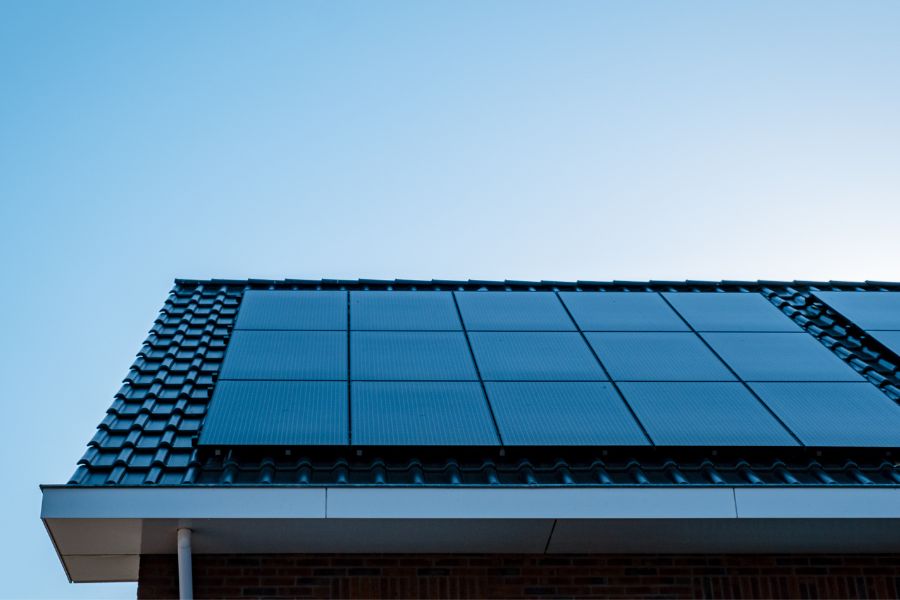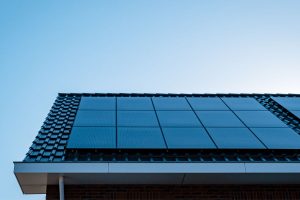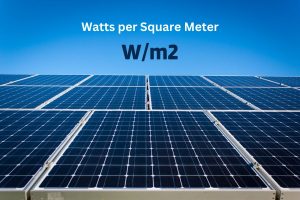
How to Install Solar Panels Tile Roof
The world keeps evolving daily, and it’s becoming increasingly difficult to keep up with the trends. It’s not any different in terms of solar panels. In fact, solar panels tile roof is all the rage. Installing solar panels on tile roofs enhances a home’s energy efficiency and contributes significantly to using renewable solar power.
However, determining the suitability of a tile roof for a solar panel system could be tricky. It involves careful consideration of various factors. The type of tile, the structural integrity of the roof, and the specifics of the solar installation are all critical components to ensure a successful and efficient solar array.
But you don’t have to figure it all out on your own. This guide will walk you through the essentials of selecting the right tile roof for your solar panels. We’ll outline the compatibility and considerations necessary for a robust and efficient solar power system.
Types of Tile Roofs Suitable for Solar Panels
Generally, tile roofs are either concrete or clay. Each has its unique characteristics and considerations for solar installation. Let’s take a closer look.
Concrete Tile Roofs
A concrete tile roof is known for its strength and durability, making it ideal for supporting a solar panel system. These roof tiles contain a mix of sand, cement, and water, resulting in a dense and heavy tile with a high thermal mass. This property makes concrete tile roofs suitable for installing solar panels and enhances the solar installation’s overall energy efficiency. That’s not all. The natural reflective properties of concrete tiles, combined with their installation technique that creates an air gap for thermal insulation, complement the energy-saving benefits of a solar array.
Clay Tile Roofs
Clay tile roofs, another popular choice for solar installations, offer a traditional aesthetic appeal and functional benefits. When installing solar panels on clay tile roofs, you have to be weary of tile’s fragility. A clay tile roof is more delicate than concrete tiles, requiring careful handling during the solar panel installation. So, installers often need to remove some clay tiles to accommodate the mounting system of the solar panels, ensuring secure attachment without compromising the roof’s integrity.
Considerations Before Installation
Roof Type and Material
The type of tile used in your roof, whether a clay tile roof, concrete tile roof, or Spanish tile roof, significantly impacts the installation process. Clay and concrete tile roofs require different handling due to their distinct physical properties. For instance, clay tiles are more fragile and may need extra care to avoid breakage, while concrete tiles are sturdier.
Structural Integrity
Assessing the structural strength of your tiled roof is vital, especially for older homes. The roof must support the additional weight of the solar panels. In the case of weaker structures, reinforcement might be necessary.
Roof Age and Condition
The age and current condition of your roof tiles, whether asphalt shingles or clay tiles, influence the decision to install solar panels. A roof nearing the end of its lifespan might need replacement before solar installation to avoid future disruptions.
Inset Solar Installation
An inset solar installation might be more suitable for certain roof types, particularly Spanish and clay tile roofs. This method involves integrating solar panels into the roofline, reducing the profile of the panels, and maintaining the aesthetic appeal of the roof.
Local Building Codes and Regulations
Also you have to comply with local building codes and regulations. These codes may vary depending on your location and can affect the installation process, materials used, and overall solar panel system design.
Installation Process

The installation of solar panels on a tile roof involves a series of steps that you have to follow to ensure the the solar system’s safety, efficiency, and longevity.
Initial Roof Inspection and Measurements
The first step is a thorough inspection of the roof to assess its condition and suitability for solar panel installation. Measurements are taken to determine the best layout for the solar panels.
Tile Replacement Mounts and Racking System
For clay and concrete tile roofs, using tile replacement mounts is an effective way to attach the solar panels securely. These mounts replace individual tiles and provide a stable base for the panels. In some cases, a racking system may also be installed to ensure proper alignment and angle of the solar panels.
Panel Placement and Attachment
Afterward, carefully place the solar panels on the roof. Professionals should be careful to make them align with the underlying structure. Plus they should be attached to the tile replacement mounts or racking system, maintaining the integrity of the roof.
Wiring and Electrical Connections
After the physical installation of the panels, conduct electrical wiring. This involves connecting the solar panels to an inverter and integrating them with your home’s electrical system. Professional electricians usually perform this step to ensure compliance with safety standards.
Final Inspection and Testing
The last step is a final inspection to ensure everything is in the right order. Then the professional tests the system to verify its operational efficiency.
Challenges and Solutions
Installing solar panels on tile roofs, particularly on clay tile roofs or Spanish tile roofs, presents several unique challenges. Not to worry, with the right approach, you can effectively manage them.
- Fragility of Tiles: Clay and Spanish tile roofs are more fragile than other types, such as concrete tile roofs. The process of installing solar panels can risk damaging these tiles.
Solution: The use of specialized tile replacement mounts mitigates this risk. These mounts allow installing solar panels without undue stress on the tiles. Additionally, employing experienced installers who are familiar with the nuances of these roof types is crucial.
- Complexity of Installation: The intricate design and layout of tile roofs, especially those with Spanish or curved clay tiles, add complexity to the installation process.
Solution: Customized mounting systems naturally fit these tiles’ unique shapes and angles, ensuring a secure and aesthetically pleasing installation.
- Weatherproofing and Integrity: Maintaining the waterproof integrity of the roof is a major concern, particularly where modifications are made to fit solar panels.
Solution: Using high-quality flashing and sealing techniques around penetrations ensures the roof remains weatherproof. Regular maintenance and inspections post-installation also help identify and address any potential issues early on.
- Aesthetic Concerns: Homeowners often worry about the visual impact of solar panels on their tile roofs.
Solution: Options like inset solar installation maintains the aesthetic appeal of tile roofs. This approach integrates the panels more seamlessly with the existing roofing material.
Benefits of Solar Panels on Tile Roofs
Despite these challenges, the benefits of installing solar panels on tile roofs are substantial.
- Durability and Longevity: Both clay and concrete tile roofs are durable. When paired with solar panels, this combination offers a long-lasting solution that can withstand harsh weather conditions while generating clean energy.
- Energy Efficiency: Solar panels on tile roofs contribute significantly to energy efficiency. They provide a sustainable power source, reducing reliance on traditional electricity sources and leading to substantial cost savings over time.
- Environmental Benefits: Solar panels are a clean, renewable source of energy. Homeowners reduce their carbon footprint and contribute to environmental conservation by installing solar panels on a tile roof.
- Increased Property Value: Homes equipped with solar panel systems, especially those integrated into durable and attractive tile roofs, often see an increase in property value. This makes solar panels a worthwhile investment not just for energy savings but also for the overall marketability of the property.
- Adaptability: Solar panels can fit various styles of tile roofs, including Spanish and clay tile roofs, making them a versatile option for many homeowners.
In a Nutshell
installing solar panels on a tile roof presents unique challenges but offers significant benefits. Combining a solar panel system with the durability and aesthetic appeal of tile roofs makes for a sustainable and energy-efficient solution.
When you carefully navigate the installation process and address specific concerns, you can enjoy the long-term advantages of a solar panels tile roof setup. In the long run, you’ll contribute to environmental conservation and energy savings.

